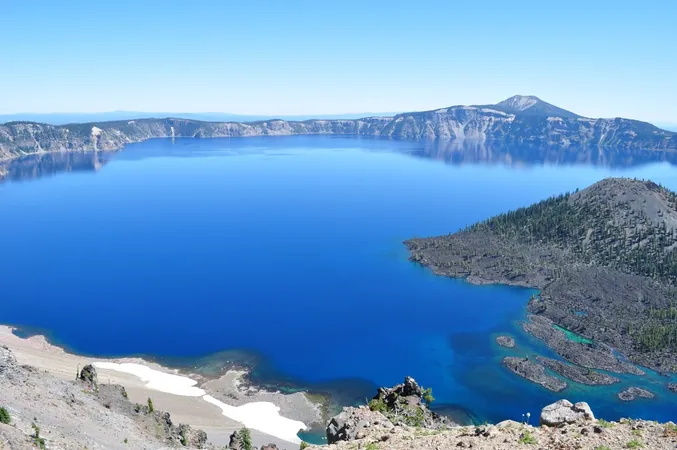
The Surprising Impact of Volcanic Ash on Forest Ecosystems
2025-09-01
Author: Sophie
Unveiling the Power of Volcanism in the Pacific Northwest
Volcanism has dramatically shaped the breathtaking landscapes of the Pacific Northwest, particularly along the infamous Ring of Fire. This geological phenomenon has bestowed lush vistas and vibrant ecosystems through explosive eruptions that release volcanic ash into the atmosphere and across vast areas. A landmark event that reshaped the ecological history of the region was the colossal eruption of Mount Mazama, now known as Crater Lake, approximately 7,700 years ago.
Mount Mazama's Eruption: A Geological Milestone
This breathtaking eruption propelled ash nearly 50 kilometers (30 miles) high, blanketing the western U.S. and parts of Canada. The sheer volume of volcanic tephra—over 120 cubic kilometers (around 30 cubic miles)—was enough to cover the entire state of Oregon to a depth of 1.5 feet. Remarkably, traces of Mount Mazama’s volcanic ash have even been discovered globally, showcasing the profound impact of this ancient eruption on the Earth’s ecological fabric.
Unlocking the Secrets of Volcanic Ash Soils
What makes volcanic ash special? Under the microscope, these soil particles resemble glass shards with tiny aerated holes. The ash typically features a smaller particle size, predominantly in the silt range, which contributes to its extraordinary ability to retain water. This means volcanic ash soils can hold two to three times more plant-available water compared to their non-volcanic counterparts.
Catalyzing Forest Growth and Diversity
This exceptional water retention capacity transforms the productivity and species composition of forests across the Western United States. Areas enriched with fine volcanic ash often experience shifts in plant communities and enhanced growth rates, fostering the flourishing of diverse species that thrive in moist environments.
A Call to Action for Forest Management
Given the vital role of volcanic ash in shaping forest ecosystems, it’s crucial for resource managers to identify and integrate these nutrient-rich soils into their management strategies. As volcanic ash represents a relatively non-renewable resource, safeguarding these unique landscapes is essential—especially in regions vulnerable to drought conditions. Protecting these ecosystems not only preserves biodiversity but also ensures the sustainability of our forests for generations to come.









 Brasil (PT)
Brasil (PT)
 Canada (EN)
Canada (EN)
 Chile (ES)
Chile (ES)
 Česko (CS)
Česko (CS)
 대한민국 (KO)
대한민국 (KO)
 España (ES)
España (ES)
 France (FR)
France (FR)
 Hong Kong (EN)
Hong Kong (EN)
 Italia (IT)
Italia (IT)
 日本 (JA)
日本 (JA)
 Magyarország (HU)
Magyarország (HU)
 Norge (NO)
Norge (NO)
 Polska (PL)
Polska (PL)
 Schweiz (DE)
Schweiz (DE)
 Singapore (EN)
Singapore (EN)
 Sverige (SV)
Sverige (SV)
 Suomi (FI)
Suomi (FI)
 Türkiye (TR)
Türkiye (TR)
 الإمارات العربية المتحدة (AR)
الإمارات العربية المتحدة (AR)